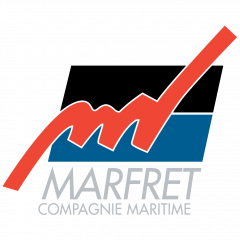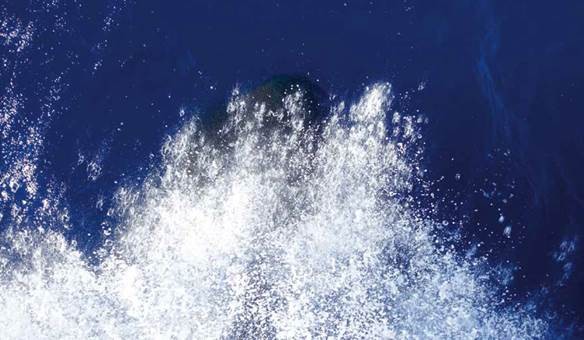The Traversers have red, brown, blond hair. Their eyes, azure blue or ebony black, look in the same direction, staring down the sea, scouring the line of the horizon. Camera in hand, eye fast against viewfinder, artist Nicolas Clauss scours the souls of the seamen and asks questions about our own condition. In the mid of the elements, the wind, the ocean, the incessant throbbing of the engines all around, who are we? For the first time in his professional life, the artist and video-making landsman specializing in portraits took to the seas in 2016 aboard a Marfret cargo ship.
His days and nights on the Marfret Guyane were the subject of a video work entitled “The Traversers”, shown at the Hors-Pistes Festival at the Pompidou Centre in 2017.
Nicolas Clauss will be presenting his film to the Le Havre port community on 12th December next as part of an evening organized in his honour by Marfret. “His approach constantly questions the human figure and condition in a visual and choreographic way. His residency began at one of our port offices, where he learned about port operations and soaked up the atmosphere before embarking on the 10-day crossing,” says Raymond Vidil, an ardent champion of culture and host of artists in residence.
Le Havre, France’s largest container port with 2.5M TEUs handled each year, is the starting point of the film. The story plays out simultaneously on five screens, each one showing a different component.
Marfret operates six services each week out of Le Havre, to the West Indies, French Guiana, the Pacific and the US. However, it isn’t the destination that interests Nicolas Clauss, it’s the ship’s continual movement. He records its every creak, dissects the gigantic machine fashioned out of plate steel. With his camera, he gets up close to the grease and rust and plays with the sea spray. Amid the thousands of containers piled one atop the other lies the human soul. Discrete, without making a sound, it is the vector of globalisation.
As Nicolas Clauss describes, “It’s the opposition of scales: the huge mass of the flow of goods, globalisation, and the human being. The sea is a setting in which I record the faces of the crew members, these men whose way of life is so unique.”
He has set his work to paper, with a book entitled “The Traversers” containing photographs, close-up portraits in which we catch a glimpse of the artist himself.

